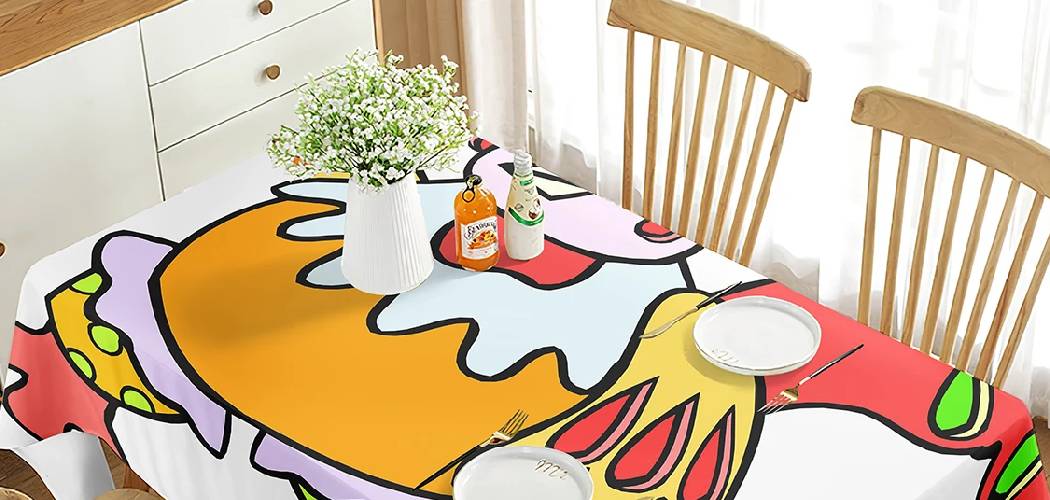Do you want to keep your polyester tablecloths looking as good as the day you bought them? It can seem a bit overwhelming, but cleaning and drying them doesn’t have to be! Follow this simple guide on how to effectively clean and care for your polyester tablecloths so that they retain their vibrant colors while keeping their shape intact.
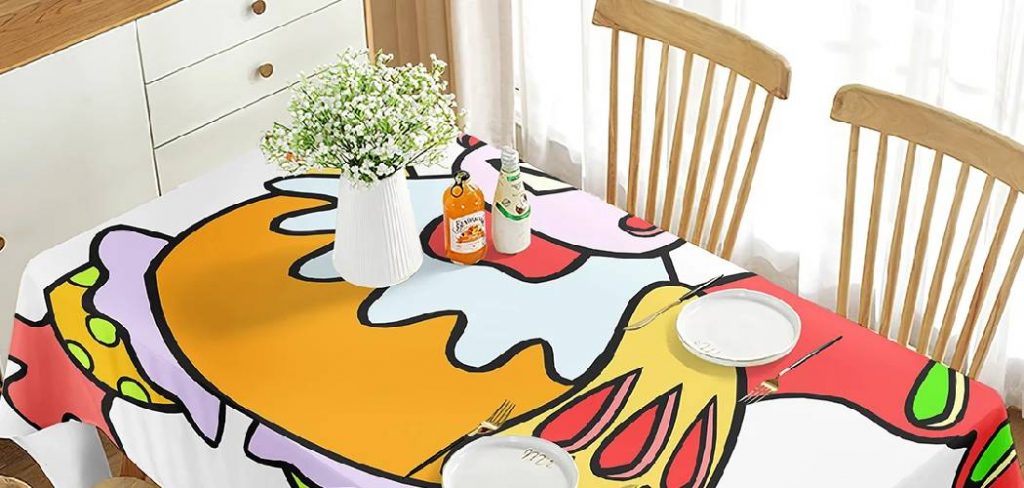
We’ll go over everything from proper washing techniques, spin cycle settings, removing dust/dirt stains and more! With these tips in mind on how to wash and dry polyester tablecloths, you can be sure that your beloved items will stay in great condition and last much longer.
Benefits of Choosing Polyester Tablecloths
Durable and Long-lasting:
Polyester is a tough, man-made fabric that can withstand multiple washes without showing signs of wear and tear.
Wrinkle-Resistant:
Unlike other fabrics such as cotton, polyester doesn’t wrinkle easily, making it the perfect choice for tablecloths where presentation is key.
Fade Resistant:
Polyester is color-fast, meaning it doesn’t easily lose its color even after multiple washes.
Affordable:
Polyester tablecloths are cheaper to buy compared to other fabrics such as linen or cotton. Furthermore, they’re less prone to shrinking and staining than other fabrics, making them a cost-effective choice in the long run.
10 Step-by-step Simple Guides on How to Wash and Dry Polyester Tablecloths
Step 1: Pre-treat Any Stains
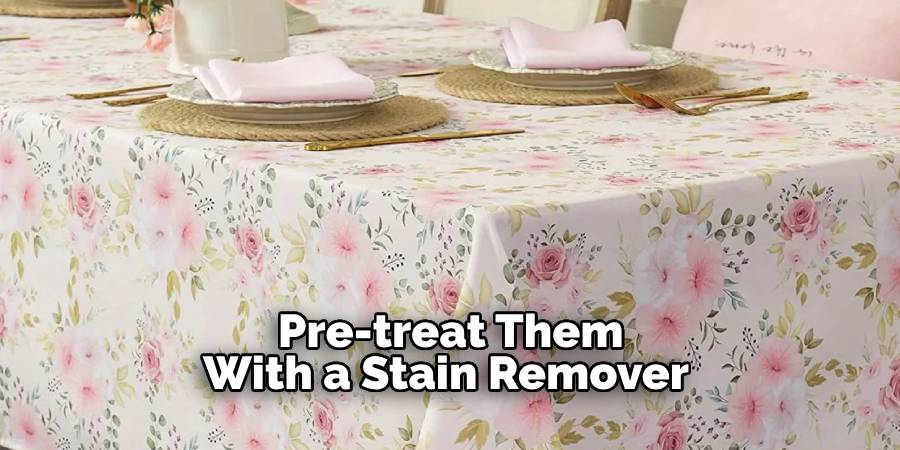
Check if your tablecloth has any stains. If so, pre-treat them with a stain remover before washing. It’s best to use a colorless stain remover to avoid any discoloration. But, if you don’t have one, rub some liquid detergent directly on the stain and let it sit for a few minutes before washing.
You can also use a paste of baking soda and water to remove tough stains. Don’t rub the stain too hard, as it could damage the fabric fibers.
Step 2: Check the Care Label
Always refer to the care label on your tablecloth for specific instructions on how to wash and dry it. If you’re unsure or if there is no label, opt for a gentle cycle with cold water to be safe. If your tablecloth is heavily soiled, use warm water instead. It’s best to avoid hot water as it can cause shrinkage.
You can also add some white vinegar to the wash cycle to help prevent any color fading. If your tablecloth has any decorations or embellishments, place it in a mesh laundry bag to protect them during the wash cycle.
Step 3: Use a Mild Detergent
Choose a mild detergent, preferably one that is specifically designed for delicate fabrics. Avoid using bleach or fabric softener as they can damage the polyester fibers. But, if you need to use bleach for tough stains, opt for a non-chlorine bleach.
It’s also best to avoid using too much detergent as it can leave a residue on the fabric. You can also use a laundry bag to protect your tablecloth from any friction or damage during the wash.
Step 4: Turn Inside Out
Turn your tablecloth inside out before washing. This will help prevent any color transfer and protect the vibrant colors of your tablecloth. You can also use a mesh laundry bag to further protect your tablecloth during the wash cycle.
If your tablecloth has any decorative trimmings or lace, it’s best to hand wash them separately. You can also put them in a pillowcase before washing them to protect them.
Step 5: Choose the Right Spin Cycle
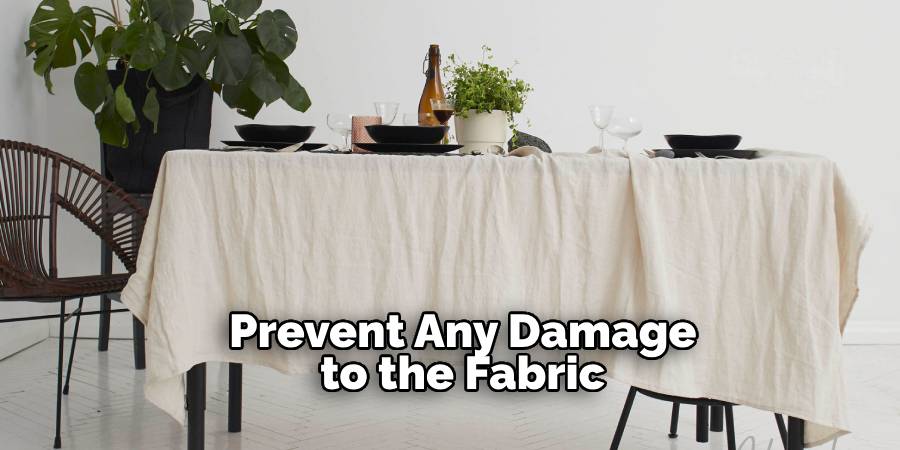
Opt for a gentle spin cycle, preferably at low speed, to prevent any damage to the fabric. High-speed spin cycles can cause the tablecloth to get tangled and could potentially stretch or tear it.
If your tablecloth is heavily soiled, you may need to use a higher spin cycle to remove excess dirt. It’s best to refer to the care label for spin cycle recommendations. You can also manually adjust the spin cycle if needed.
Step 6: Remove from Washer Immediately
Once the cycle is complete, remove your tablecloth immediately from the washer. Leaving it sitting in the machine for too long can cause wrinkles and color transfer. Shake off any excess water and unfold the tablecloth carefully to avoid creating additional creases.
It’s best to hang the tablecloth up to dry. But, make sure to hang it away from direct sunlight to prevent any color fading.
Step 7: Air Dry or Tumble Dry on Low
Polyester tablecloths can be air-dried or tumble-dried on low heat. It’s best to avoid high heat as it can cause shrinkage and damage to the fabric fibers. If you’re using a dryer, remove the tablecloth while it’s still slightly damp to avoid excessive wrinkling. You can also toss in a couple of dryer balls or clean tennis balls to help fluff the fabric and remove any wrinkles.
Step 8: Iron if Needed
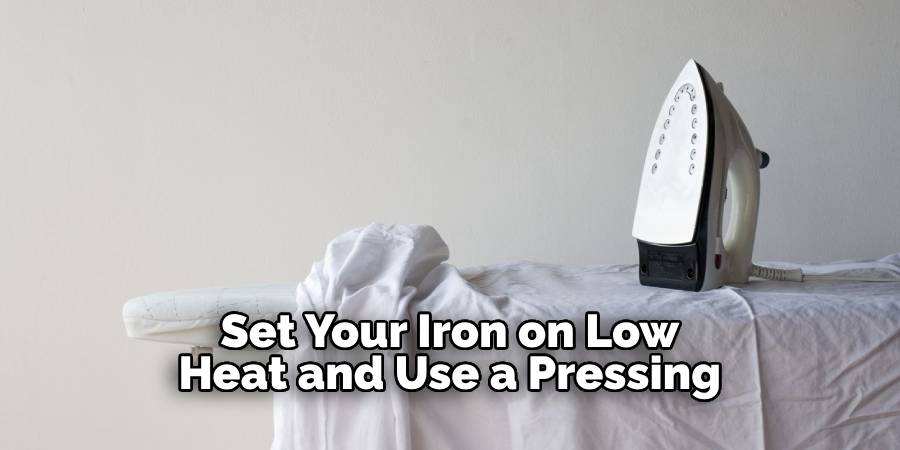
If your tablecloth is still slightly wrinkled after drying, you may need to iron it. Set your iron on low heat and use a pressing cloth to avoid any damage to the fabric. Iron on the reverse side of the tablecloth, and use short, gentle strokes. Avoid using steam as it can cause watermarks on the fabric.
If you’re not comfortable ironing, you can also use a steamer to remove wrinkles. It’s best to test a small, inconspicuous area first.
Step 9: Store Properly
Once your tablecloth is clean and dry, it’s important to store it properly. You can fold it neatly and store it in a cool, dry place away from direct sunlight. You can also roll the tablecloth and store it in a drawer or on a shelf. Avoid hanging it up as this can cause the fabric to stretch and could potentially damage any decorative trimmings.
Step 10: Repeat Regularly
To keep your polyester tablecloth looking its best, it’s important to wash it regularly. It’s recommended to wash after every use if possible, or at least once a month if not used frequently.
This will help prevent any stains from setting in and keep your tablecloth looking fresh and vibrant. With proper care, your polyester tablecloth will continue to be a beautiful addition to your home for years to come.
By following these simple steps on how to wash and dry polyester tablecloths, you can ensure that your polyester tablecloths remain clean, vibrant and long-lasting. Proper care and maintenance are essential for extending the life of any fabric, and polyester is no exception.
With just a little bit of effort, you can keep your tablecloths looking like new for every occasion. So go ahead and enjoy those family dinners, holiday gatherings, and special occasions without worrying about ruining your favorite tablecloth!
Frequently Asked Questions
Q1: Can I Wash My Polyester Tablecloth With Other Fabrics?
A: Yes, you can wash your polyester tablecloth with other fabrics. Just make sure to sort them according to color and fabric type before washing. It’s also best to avoid washing your tablecloth with heavy or rough fabrics that can cause damage.
Q2: Can I Use Stain Remover on My Polyester Tablecloth?
A: Yes, you can use a colorless stain remover on your polyester tablecloth. Just make sure to spot-test it first in an inconspicuous area before using it on the entire tablecloth. Follow the instructions on the stain remover and make sure to wash the tablecloth immediately after using it.
Q3: Can I Dry Clean My Polyester Tablecloth?
A: Yes, you can dry clean your polyester tablecloth. However, it’s best to avoid frequent dry cleaning as it can cause shrinkage and damage to the fabric fibers over time. It’s recommended to only dry clean your tablecloth when necessary.
Q4: How Do I Remove Wrinkles from My Polyester Tablecloth?
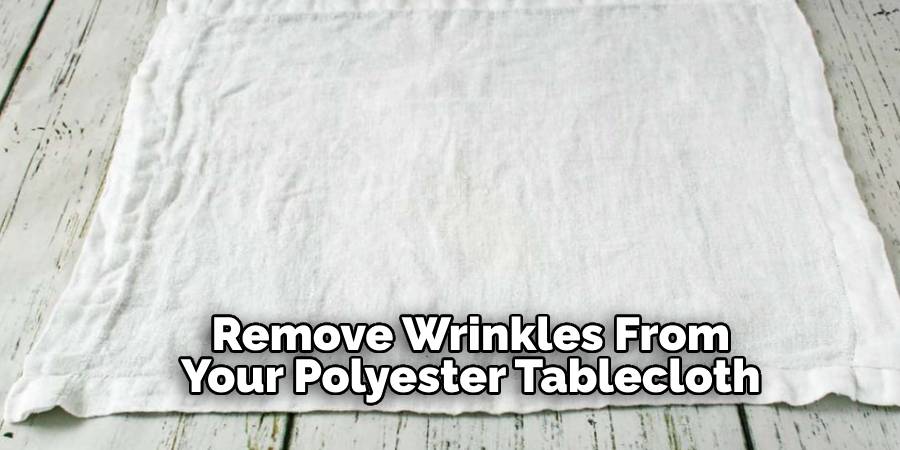
A: You can remove wrinkles from your polyester tablecloth by using a steamer, ironing on low heat with a pressing cloth, or tossing it in the dryer with a couple of dryer balls. Make sure to follow the care instructions and test a small area first before applying heat to the entire tablecloth.
Conclusion
In conclusion, if you are looking to keep your polyester tablecloth looking and feeling new, then taking the time to properly care for it is an essential part of making sure it lasts. Following these steps on how to wash and dry polyester tablecloths and taking the time to hand wash and air-dry your clothes is the best way to make sure that it stays in good condition.
Along with this, gently stretching the fabric while wet can also help it remain wrinkle-free. Try to avoid dryers or blow-drying your cloth as these methods can cause it to lose color or shrink.
The best way to ensure long-term quality is by taking proper care of all of your textiles – including polyester tablecloths! Now that you know how easy it is to maintain a clean and presentable polyester tablecloth, let’s start laundering – happy cleaning!
